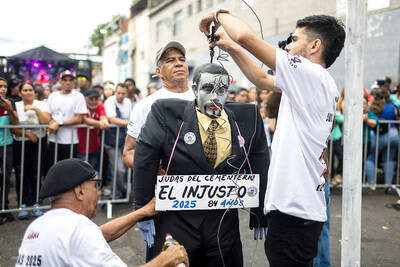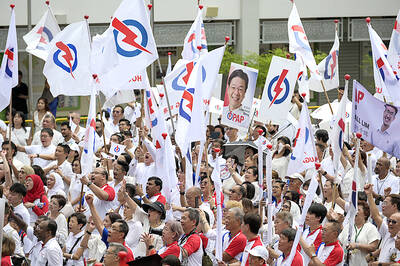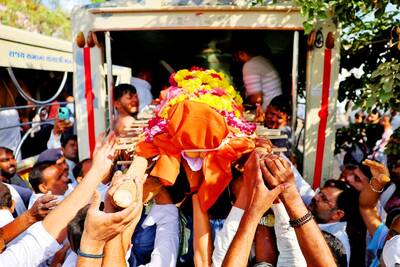Doctors will have to make patients seeking liposuction wait 15 days to make sure they want to undergo the fat-removal surgery, under draft regulations published yesterday.
Liposuctions are the first aesthetic procedure to come under the scrutiny of Singapore’s Health Ministry.
The complicated procedure has resulted in deaths, even in Europe, where it has been practiced for a long time, the Straits Times said. The only other medical procedure requiring a cooling-off period in the city-state is abortion.
“We think this period is useful,” Health Minister Khaw Boon Wan was quoted as saying. “Otherwise, some operators might hard sell and force the customer to go and lie down and do it immediately.”
Risks of cosmetic treatments have focused on general practitioners carrying out cosmetic surgery and other aesthetic procedures.
Khaw cited a case in Malaysia where a 40-year-old patient was left comatose following a tummy tuck performed by an orthopedic surgeon and botched operations in Singapore that required follow-up surgeries to fix mistakes.
Under the new rules, the Health Ministry wants operations removing more than 1 liter of fat to be done in a hospital or surgery center. Any amount less can be removed in approved premises.
Plastic surgeons said it is more common to remove between 3 liters and 7 liters of fat.
Physicians must have spent at least one year in surgery and acquired training in liposuctions to qualify for a license to perform the cosmetic procedure.
The Singapore Association of Plastic Surgeons criticized the piecemeal approach to the regulations, which mocked the “comprehensive way bona fide plastic surgeons are trained.”
Doctors said the number of liposuction procedures performed in Singapore runs into the thousands annually.
Doctors will have to keep track of their liposuction treatments when the rules take effect in a few months, the report said.

POLITICAL PRISONERS VS DEPORTEES: Venezuela’s prosecutor’s office slammed the call by El Salvador’s leader, accusing him of crimes against humanity Salvadoran President Nayib Bukele on Sunday proposed carrying out a prisoner swap with Venezuela, suggesting he would exchange Venezuelan deportees from the US his government has kept imprisoned for what he called “political prisoners” in Venezuela. In a post on X, directed at Venezuelan President Nicolas Maduro, Bukele listed off a number of family members of high-level opposition figures in Venezuela, journalists and activists detained during the South American government’s electoral crackdown last year. “The only reason they are imprisoned is for having opposed you and your electoral fraud,” he wrote to Maduro. “However, I want to propose a humanitarian agreement that

ECONOMIC WORRIES: The ruling PAP faces voters amid concerns that the city-state faces the possibility of a recession and job losses amid Washington’s tariffs Singapore yesterday finalized contestants for its general election on Saturday next week, with the ruling People’s Action Party (PAP) fielding 32 new candidates in the biggest refresh of the party that has ruled the city-state since independence in 1965. The move follows a pledge by Singaporean Prime Minister Lawrence Wong (黃循財), who took office last year and assumed the PAP leadership, to “bring in new blood, new ideas and new energy” to steer the country of 6 million people. His latest shake-up beats that of predecessors Lee Hsien Loong (李顯龍) and Goh Chok Tong (吳作棟), who replaced 24 and 11 politicians respectively

Young women standing idly around a park in Tokyo’s west suggest that a giant statue of Godzilla is not the only attraction for a record number of foreign tourists. Their faces lit by the cold glow of their phones, the women lining Okubo Park are evidence that sex tourism has developed as a dark flipside to the bustling Kabukicho nightlife district. Increasing numbers of foreign men are flocking to the area after seeing videos on social media. One of the women said that the area near Kabukicho, where Godzilla rumbles and belches smoke atop a cinema, has become a “real

‘WATER WARFARE’: A Pakistani official called India’s suspension of a 65-year-old treaty on the sharing of waters from the Indus River ‘a cowardly, illegal move’ Pakistan yesterday canceled visas for Indian nationals, closed its airspace for all Indian-owned or operated airlines, and suspended all trade with India, including to and from any third country. The retaliatory measures follow India’s decision to suspend visas for Pakistani nationals in the aftermath of a deadly attack by shooters in Kashmir that killed 26 people, mostly tourists. The rare attack on civilians shocked and outraged India and prompted calls for action against their country’s archenemy, Pakistan. New Delhi did not publicly produce evidence connecting the attack to its neighbor, but said it had “cross-border” links to Pakistan. Pakistan denied any connection to